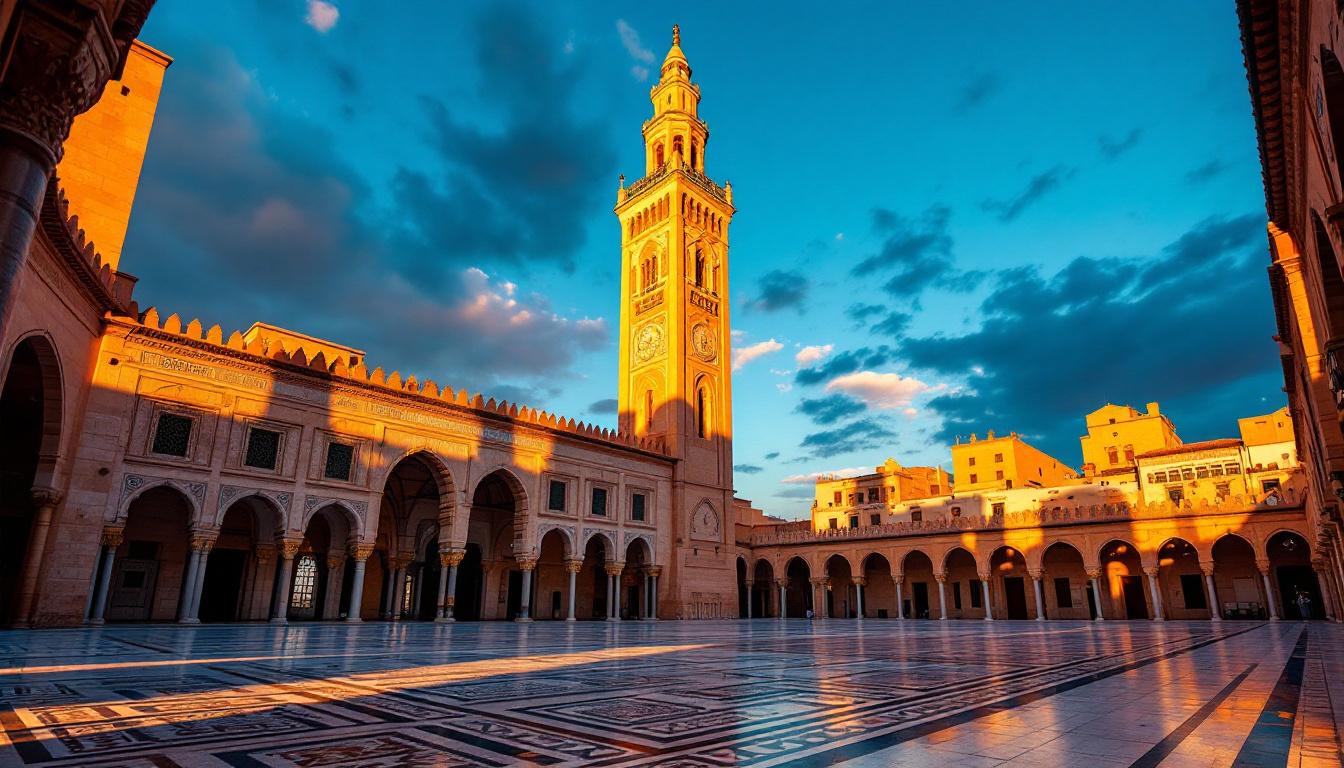Standing before the Great Mosque of Kairouan at dawn, I realized I was witnessing something extraordinary. This isn’t just another historic mosque—it’s the architectural blueprint that influenced every major Islamic monument from Córdoba to Cairo, yet somehow remains Tunisia’s best-kept secret.
While millions flock to Istanbul’s Blue Mosque or Morocco’s tourist-packed medinas, Kairouan holds the unique distinction as Islam’s 4th holiest city. Founded in 670 CE, this sacred destination offers something no other North African city can: authentic Islamic heritage without the crowds, preserved exactly as it was 1,300 years ago.
What makes this place truly special isn’t just its religious significance—it’s that locals have successfully protected their sacred spaces from mass tourism, creating an experience you’ll find nowhere else in the Islamic world.
The architectural masterpiece that inspired Istanbul
Ancient innovations still standing strong
The Great Mosque’s minbar from 862 CE is the oldest surviving wooden pulpit in Islam, predating Istanbul’s famous mosques by centuries. Its intricate geometric patterns and calligraphy influenced Ottoman architects who would later build the Blue Mosque using similar design principles.
Roman columns meet Islamic artistry
Unlike any mosque worldwide, Kairouan’s prayer hall features 414 repurposed Roman and Byzantine columns creating a forest of marble and granite that tells the story of civilizations. Each column tells a different story, from Carthaginian quarries to Byzantine churches, now supporting one of Islam’s most sacred spaces.
The sacred experiences you can’t find elsewhere
Access to Islam’s 4th holiest site
While non-Muslims can explore the mosque’s stunning courtyard and admire the world’s oldest minbar, the real magic happens during evening prayers when 1,300 years of continuous worship fills the ancient halls. The acoustics, designed to carry prayers across the massive space, create an otherworldly atmosphere.
The barber’s tomb that draws pilgrims
The Zawiya of Sidi Sahib houses relics of Prophet Muhammad’s barber, making seven visits here equivalent to one pilgrimage to Mecca according to local tradition. This intimate shrine, with its stunning ceramic work and peaceful gardens, offers a spiritual experience impossible to find in more commercialized Islamic sites.
Local guardians preserving authentic culture
Craftsmen protecting ancient traditions
Kairouan’s carpet weavers still create the intricate Alloucha rugs using 1,000-year-old techniques passed down through generations. Unlike mass-produced Moroccan carpets sold to tourists, these masterpieces take months to complete and are considered the finest in North Africa.
Community efforts limiting tourism impact
Local families have deliberately kept accommodation simple and affordable, with traditional guesthouses costing just $30-40 per night. This isn’t accidental—residents believe their sacred city should remain accessible to genuine pilgrims rather than luxury tourists seeking Instagram opportunities.
The practical advantages of choosing authenticity
Costs that make sense for real travelers
While Marrakech hotel prices soar above $200 nightly and Fez charges premium rates for medina access, Kairouan’s entire daily budget averages $40-50 including meals, accommodation, and site visits. The Great Mosque entry is free, with optional donations supporting preservation efforts.
Autumn timing for perfect conditions
September through November offers ideal 20-25°C temperatures perfect for exploring the medina’s narrow streets without summer’s intense heat. The olive harvest season brings local festivals celebrating both agricultural traditions and religious heritage, creating cultural experiences unavailable during peak tourist months.
Planning your sacred city experience
What makes October 2025 perfect timing?
Why visit this autumn? October 2025 offers perfect weather conditions with comfortable temperatures and the annual olive harvest festivals.
How do I respect local customs?
What should I wear? Modest clothing covering shoulders and knees is required for all religious sites, with headscarves recommended for women visiting mosques.
Can I access all religious sites?
Which areas are open to non-Muslims? The Great Mosque courtyard and architectural details are accessible, while prayer halls remain restricted during worship times.
How long should I stay?
What’s the ideal visit duration? Two to three days allows proper exploration of the medina, craft workshops, and religious sites without rushing this sacred experience.
Kairouan represents something increasingly rare in our interconnected world—a place where authenticity isn’t performed for tourists but lived daily by communities who’ve preserved their heritage for 13 centuries. This autumn, while others queue for photos in overcrowded Moroccan souks, you can experience the genuine heart of Islamic civilization where it all began.
Book your flight to this hidden French coastal town that rivals the Riviera or explore better than Angkor Wat: this ancient Myanmar city has 2,000 temples for more authentic cultural discoveries, then plan this medieval French village split in two that hides Provence’s best-kept secret for your complete off-the-beaten-path Mediterranean journey.
